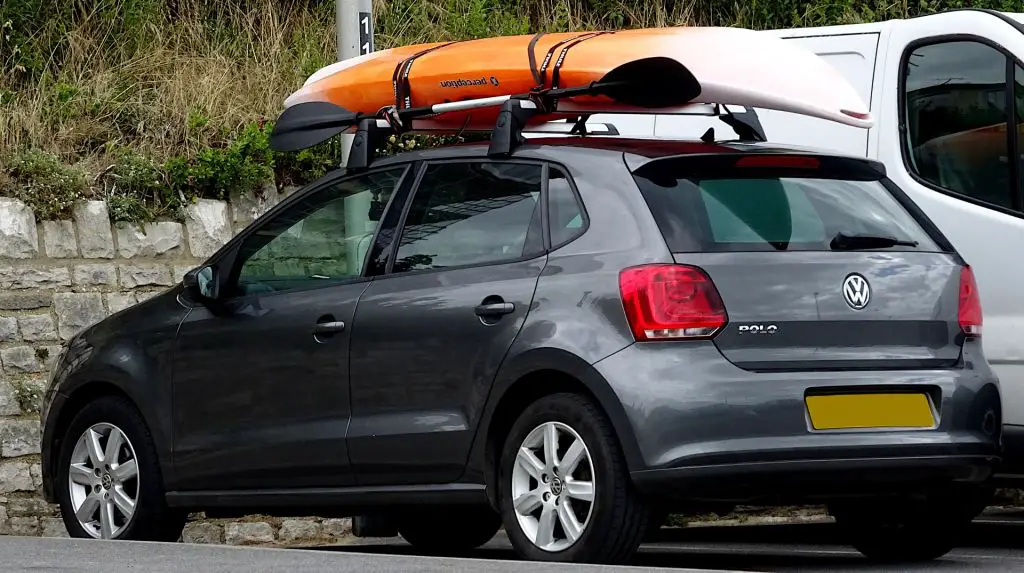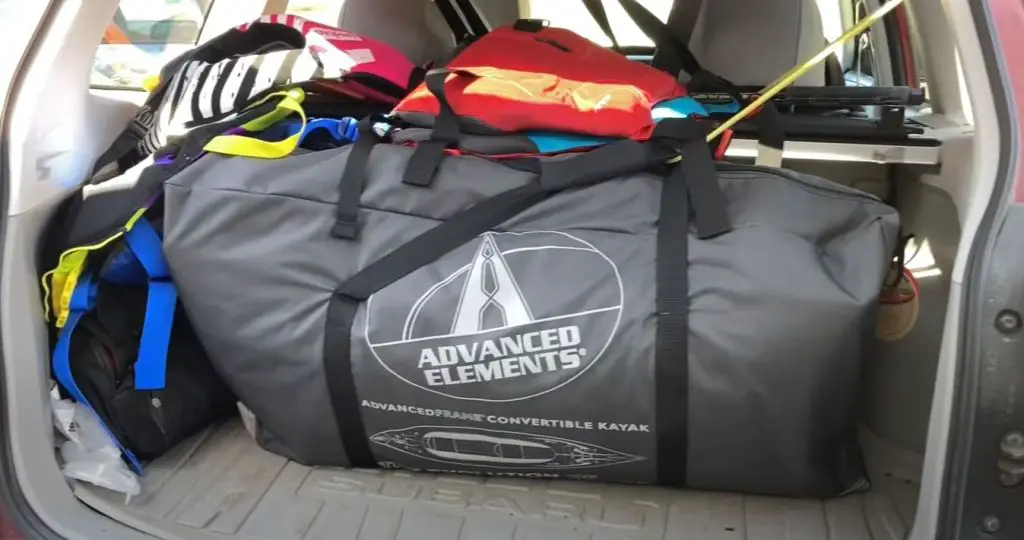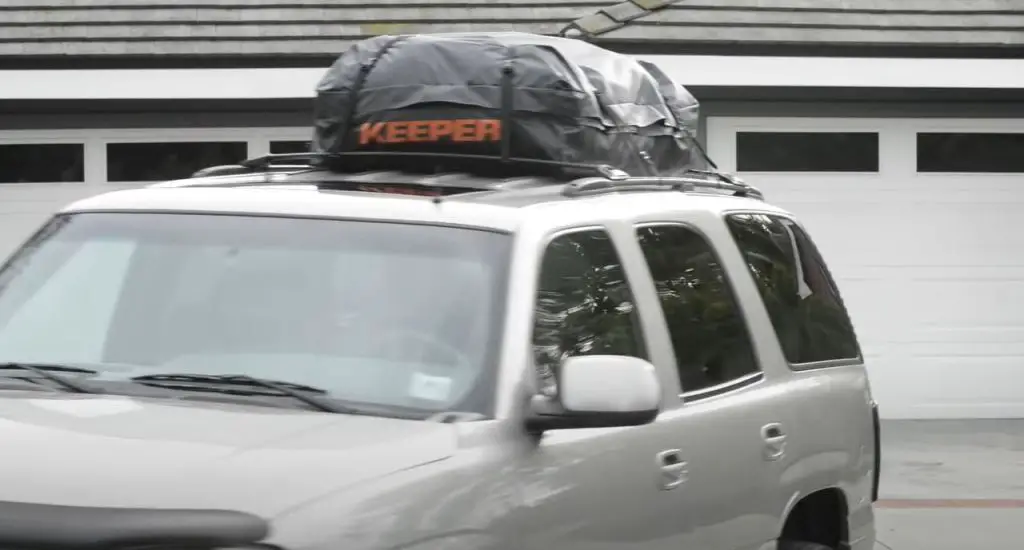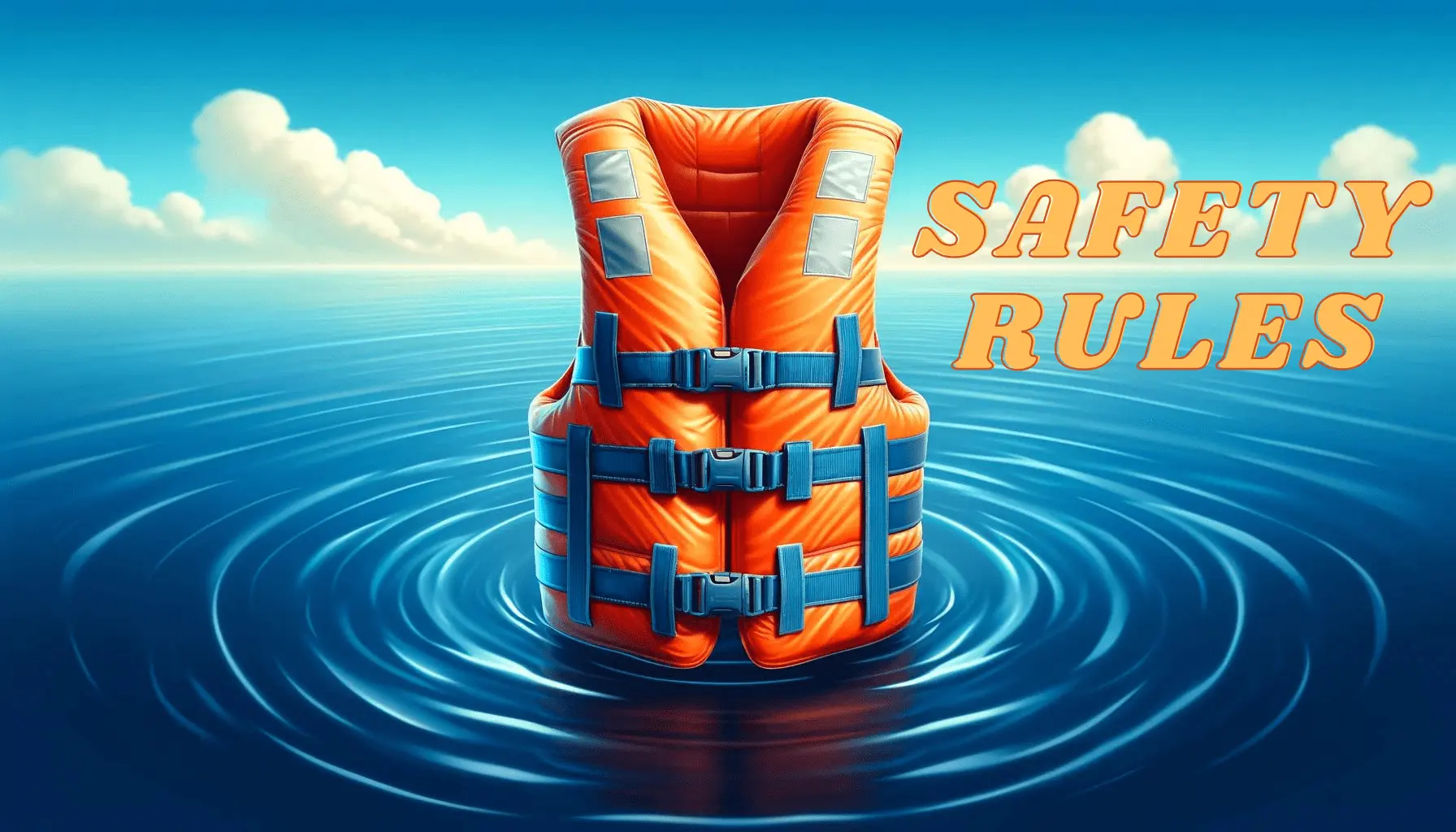Transporting an inflatable kayak may seem like a daunting task, especially if you’ve never done it before. However, with the right equipment and techniques, transporting an inflatable kayak can be just as easy as transporting a hardshell kayak.
With careful evaluation of transportation options and proper preparation, kayakers can ensure their kayak arrives safely for their next adventure on the water.
In this article, I will provide you with some tips and tricks on how to transport your inflatable kayak safely and easily, so you can get out on the water and enjoy your paddling adventure.

First, Assess Your Transportation Options
Remember, the key is to make transporting your inflatable kayak as easy as possible so that you can focus on the fun part of kayaking—being out on the water.
Depending on the type of vehicle you have and the size of your kayak, you may need to consider different methods of transporting it.
Evaluate The Type Of Vehicle You Have
Think about what type of vehicle you have and whether it’s suitable for transporting your kayak. Consider the size and weight of your kayak and whether it will fit inside your vehicle or require a roof rack or trailer.
If you have a smaller vehicle, such as a van or hatchback, transporting your kayak may require some creativity. One option is to fold down the back seats and slide the deflated kayak inside. You can also place the kayak on its side and secure it with straps or bungee cords.
However, if your kayak is too large to fit inside (say, around 12–14 feet in length and 28–32 inches in width), you may need to consider using a roof rack or trailer.
When using a roof rack or trailer, it’s important to be mindful of the potential for damage to your kayak and your vehicle’s paint job. Use protective padding between the kayak and the rack, and be careful not to overtighten straps or buckles that can rub against the boat during transport.
Consider The Size And Weight Of The Kayak
If you have a smaller kayak, you may be able to transport it inside your vehicle or in the bed of a pickup truck. To protect the interior of your vehicle, you can use a blanket or other soft material as a barrier between the kayak and any surfaces it may come into contact with.
For larger kayaks, you may need to get a hand truck, rack, or trailer to transport them safely and quickly. Make sure to choose a roof rack or trailer that is rated to handle the weight of your kayak, and always follow the manufacturer’s instructions for installation and use.
No matter what size kayak you have, it’s always a good idea to use cam straps or other tie-downs to secure the kayak during transportation. This will help prevent the kayak from shifting during transit, which can damage the kayak or pose a danger to other motorists.
Determine The Distance You Need To Travel
While transporting a fully inflated kayak on top of your vehicle or on a carrier at the back may seem like a good idea at first, it can become a real challenge on bumpy roads or during long-distance travels.
Not to mention the potential damage to the kayak’s surface from constant friction caused by straps or buckles rubbing against the kayak.
To avoid these issues, it’s highly recommended to transport your inflatable kayak deflated and packed away in a bag, with an electric pump ready to inflate it quickly and easily at your destination. This not only prevents potential damage but also makes it much easier to move around from your vehicle to the launch point, especially on rough terrain.
You’ll want to keep an eye on your speed when transporting your kayak, especially if you’re using a roof rack or carrier.
Wind can affect the safety of your equipment, so it’s important to take precautions and adjust your speed.
Also, don’t forget about the sun’s effect on your inflatable kayak. It can cause the kayak to inflate, so you’ll want to release some pressure before leaving, and don’t forget to close the valves back up again.
Prepare Your Kayak For Transportation
Before you start transporting your kayak, it’s important to prepare it for the journey ahead.
Clean Your Kayak Before Transporting It

When you’re out on the water, your kayak can quickly accumulate dirt, sand, and other debris.
While it might be tempting to leave it as is, cleaning your kayak before transporting it is an important step in keeping it in good condition. Of course, cleaning your kayak thoroughly on the beach or by the river can be a challenge. But wiping it down with a rag or towel can help remove most of the dirt and grime. Once you get home, make sure to give your kayak a proper cleaning to ensure that it’s ready for your next adventure.
Be sure to pay extra attention to any areas where dirt or debris may have accumulated, such as the bottom of the kayak or the storage compartments. Additionally, make sure to rinse the kayak thoroughly with clean water and allow it to dry completely before storing or transporting it.
Deflate And Pack The Kayak If You Transport It Deflated
The quickest and most effective way to deflate your kayak is to use an electric pump designed for this purpose. This will ensure that all of the air is removed from the kayak, making it easier to fold up and pack away.
Also for you, I will leave a useful video on how to deflate an inflatable kayak manually.
Once deflated, the kayak can be folded up and placed in a bag. However, bags containing kayaks can be quite heavy and cumbersome to carry. A hand truck can help you easily move your kayak from your vehicle to the water.
Simply place the bag containing the kayak on the hand truck and roll it along to your destination. This can save you from having to carry a heavy bag over a long distance and potentially injuring yourself.
Also, be sure to check that all accessories, such as paddles and life jackets, are securely stored as well.
Protect The Kayak From Potential Damage During Transport
Before you hit the water, it’s important to make sure your kayak is securely fastened to your vehicle to prevent any damage or accidents during transport.
One way to do this is by using kayak straps. These are essential for safely and securely transporting your kayak.
But not all straps are created equal! Look for ones made of durable materials like nylon webbing or bungee cord that can withstand the elements. And make sure they’re adjustable, easy to use, and have a secure locking mechanism.
Cam buckle straps are a great choice for local trips and are preferable over ratchet straps as they’re gentler on your kayak and less likely to be over-tightened.
While the cam buckle straps are generally strong, it’s always a good idea to add extra tie-downs at the bow and stern of your kayak. This can prevent your kayak from moving during transport, especially if you have to brake suddenly or if the main straps become loose.
Bow and stern tie-downs can also help reduce the strain on your roof rack and keep your kayak securely in place during long trips or over bumpy roads.
Another option to consider are kayak cradles. These are special racks that hold your kayak in place and prevent it from shifting during transport. They can be a bit pricier than straps, but they offer additional protection for your kayak and make loading and unloading easier.
Whatever method you choose, make sure to take the time to properly secure your kayak before hitting the road.
How To Transport An Inflatable Kayak (Different Methods)
Let’s explore some popular methods, each with its own advantages and considerations:
Inside Of Your Car In A Bag

This method involves deflating your inflatable kayak and packing it neatly in a carrying bag to transport it inside your car.
If your inflatable kayak comes with its own bag, use it, as it’s designed to perfectly fit your kayak. Try to get rid of all the air, and then you can definitely fit your kayak in the bag. If you’re using a different bag, make sure it’s large enough to accommodate the kayak while leaving enough space for padding and other necessary accessories.
Depending on the size of your kayak and your car, you may need to move the seats or make other adjustments to fit it inside.
When packing your inflatable kayak into a bag, spacing and weight distribution are important considerations to keep in mind. It’s best to avoid overstuffing the bag, which can cause unnecessary strain on the materials and potentially lead to damage. Also, try to avoid placing heavy items on top of it.
On A Roof Rack
To transport your inflatable kayak on a roof rack, you may inflate it first and then strap it securely to the roof rack using cam straps. You can either purchase or build a roof rack that fits the size of your kayak and is compatible with the rack system on your vehicle.
Before securing your inflatable kayak to the roof, make sure to release some pressure from the valves to prevent overinflation due to exposure to sunlight. Once you have released some pressure, don’t forget to put the valve caps back on before tightening the straps.
Bow and stern lines are crucial to keeping your inflatable kayak secure on the roof rack. They prevent the kayak from shifting unexpectedly, especially during sudden braking or sharp turns.
To use bow and stern lines, make sure to tie them firmly to the anchor points or bumpers on your vehicle. This will ensure that your kayak stays in place while you’re driving.
Below, you can watch a video on how to transport an inflatable kayak on a roof rack.
Transport Inflatable Kayak In A Roof Bag

With a roof bag, you won’t have to worry about the kayak shifting or moving around during transport, as the bag will keep it secure and snuggly strapped to your vehicle. Just make sure to double-check the dimensions of your kayak and the roof bag before purchasing to ensure a proper fit.
When using a roof bag to transport your inflatable kayak, it’s important to properly secure the bag to your vehicle’s roof. Make sure to follow the instructions provided with the bag and use the appropriate straps and buckles to prevent the bag from shifting or coming loose during transport.
It’s also a good idea to check the weather conditions before heading out on your kayaking trip. While roof bags are generally waterproof, it’s best to avoid driving in heavy rain or other severe weather conditions, as this could potentially damage your kayak or the roof bag.
Things To Consider While Driving With Your Inflatable Kayak
When driving with your inflatable kayak, it’s important to consider safety as a top priority.
Safety Considerations While Driving
Always be aware of your surroundings and take extra precautions when passing under low bridges or overhangs or when driving on bumpy roads. Ensure your kayak is securely fastened to your roof rack or trailer, and refer to the points above to help prevent it from shifting or falling off during transit.
Additionally, it’s a good idea to use a flag or other indicator to increase your visibility to other drivers on the road.
How Wind And Weather Can Affect The Stability
As you drive, be aware of how wind and weather conditions can affect the stability of the kayak on your roof rack or trailer.
Windy conditions can create strong forces that hit the front or side of the kayak, causing it to wobble or sway on your roof rack or trailer. It helps to adjust your driving speed accordingly.
Don’t forget that the sun can cause your kayak to inflate! Keep that in mind.
Check The Kayak Periodically During Transport
Take a quick glance in your rearview mirror or pull over in a safe spot to inspect the straps and padding. This will help you catch any potential issues early on and prevent any damage to your kayak or your vehicle.
Summary
Transporting an inflatable kayak requires careful consideration to ensure that it arrives at its destination in good condition.
Deflating the kayak and packing it properly can make transport more manageable, and using padding and cam straps can prevent damage to the kayak during transport, so you won’t need to fix it in the future.
Additionally, it is essential to be aware of how weather conditions can affect the stability of the kayak on your roof rack or trailer and to periodically check the kayak during transport to ensure it remains secure.
With these tips in mind, you can safely transport your inflatable kayak and enjoy your next water adventure with peace of mind. Happy paddling!



